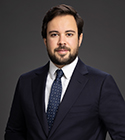This article was originally published on
SFF Magazine. Read the article
here (in English) or
here (en español).
How are financial services adapting their offerings and operations to recent developments in the ESG regulatory framework?
With two-thirds of high net worth (HNW) individuals worldwide seeing sustainable investing as a very important aspect of their portfolios[1], ESG (Environment, Social, Governance) is the investment related topic that has grown most in importance over the past few years. Financial services providers are rethinking their offerings to support their clients in building more sustainable investment portfolios. Crucially, and as regulation continues to evolve, they need to proactively articulate what their sustainability journey looks like, with a clear roadmap considering ESG criteria both within their operations and products.
The European Commission is urging the implementation of ESG criteria in the financial services sector through a comprehensive regulatory and legal framework. The first quarter of 2022 already saw the implementation of the Sustainable Finance Disclosure Regulation (SFDR) and the related Taxonomy Regulation. The next key milestone comes in August 2022, when sustainability provisions under UCITS, AIFMD, MiFID and IDD regulations will come into force. Concretely, this means that financial services providers will be required to collect their clients’ ESG preferences. Additionally, by the end of the year 2022, the European Commission will conduct an evaluation on the status of SFDR and, by January 2023, the SFDR Level 2 Regulatory Technical Standards (RTS) will finally come into force. (click here to access the detailed timeline). In the meantime, the absence of a clear regulatory and legal framework is bringing confusion around the classification of financial products under Articles 6, 8 and 9.
Unit-linked life insurance is a well-established and internationally recognised investment solution, commonly used by HNW & UHNW individuals to structure their wealth and ensure it is efficiently passed on to future generations. These families often have complex requirements and sophisticated wealth planning needs that need to be addressed cross-generations.
Whilst non-financial goals are increasingly top of mind when it comes to building a sustainable wealth planning strategy, unit-linked life insurance is well positioned to facilitate ESG investing, thanks to its long term nature and flexibility. It is an ideal solution by design to seamlessly and efficiently integrate sustainable investments within a portfolio. It will play a key role for wealthy families to channel their investments and have an impact in terms of sustainability.
-

- Hilario Caballero
Product Development Specialist
Lombard International Assurance